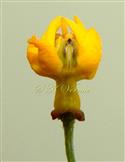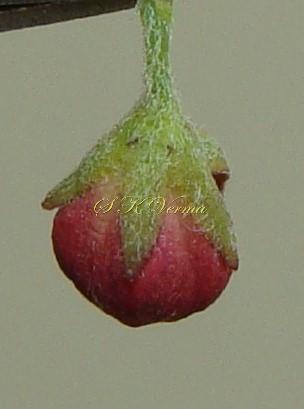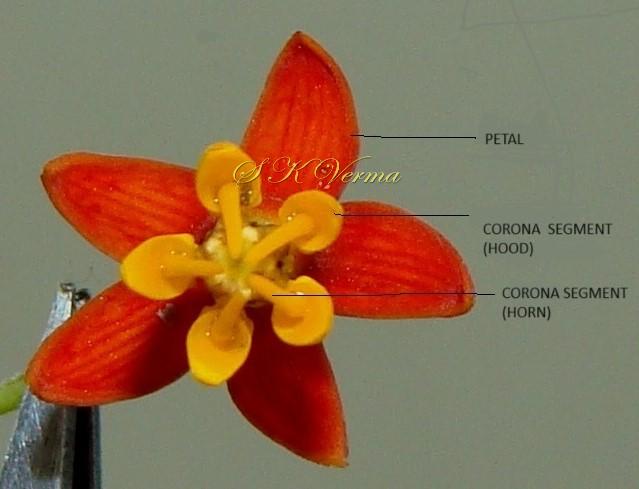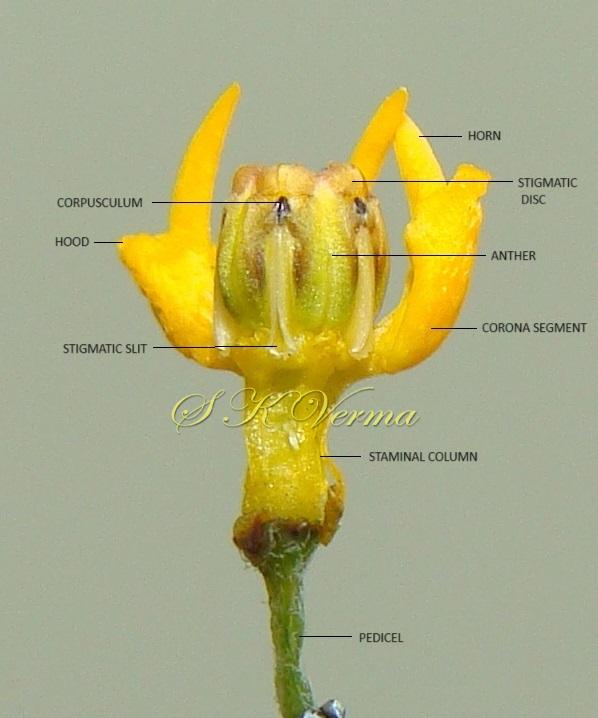ASCLEPIAS
Asclepias
L., Sp. Pl. ed. 1: 214. 1753; Gen. Pl. ed. 5: 102. 1754; Hook. f., Fl. Brit. India 4: 18. 1885; Spellman, Ann. Miss. Bot. Gard. 62(1): 110. 1075; Stevens in Saldanha & Nicholson, Fl. Hassan Dist. 439. 1976; Fl. China @ eFloras.org 16: 203; Ali, Fl. Pak. @ eFloras.org p. 5.
Herbs, base frequently woody, annual or perennial. Leaves opposite or whorled, short petiolate. Cymes terminal and extra-axillary, erect, umbel-like, many flowered. Flowers coloured. Calyx 5-lobed, usually with 5-10 glandular structures at the base of sinuses. Corolla rotate, deeply parted, lobes 5, reflexed, valvate or rarely overlapping to right. Corona usually of 5 stipitate tubular segments (hoods) attached to top of gynostegium stipe; from within each of hoods a horn arises which arches over gynostegium. Stamens 5, inserted at base of corolla tube; filaments connate into a tube; anther appendages incurved; pollinia oblong, 2 per pollinarium, pendulous in anther thecae. Stigma flattened, 5-angled or lobed. Follicles fusiform, apex acuminate. Seeds comose (flat with a long coma).
205 species
Asclepias curassavica
Asclepias curassavica
L., Sp. Pl. 215. 1753; Hook. f., Fl. Brit. India 4: 18. 1885; Parker, For. Fl. Punj. ed. 1: 353. 1918 (Reprint 1973); Nair, Fl. Bushahr Himal. 182. 1977; Dhaliwal & Sharma, Fl. Kullu Dist. 435. 1999; Kaur & Sharma, Fl. Sirmaur 424. 2004; Singh & Sharma, Fl. Chamba Dist. 462. 2006; Huber in Abeyw., Fl. Ceylon 1(1): 32. 1973; Spellman, Ann. Miss. Bot. Gard. 62(1): 110. 1975; Fl. China @ eFloras.org 16: 203; Ali, Fl. Pak. @ eFloras.org p.5.
An erect undershrub, 1 m or more in height, lactiferous. Stem pale yellow, pubescent or glabrous. Leaves opposite, 6-15 cm x 1-4 cm; leaf lamina lanceolate, linear-lanceolate or oblong-lanceolate, thin, glabrous, narrowed at both ends, margin entire, apex acute or acuminate, glabrous or sometimes veins pubescent abaxially; petiole 5-10 mm long. Stipules absent. Flowers ca. 8 mm long and 16-18 mm across, red or orange red in axillary umbels, nearly as long as leaves; peduncle 3.5-6.0 cm long, pubescent; pedicels +/- 1.7 cm long, puberulent. Calyx hidden by reflexed petals; sepals 5, fused at base; calyx campanulate, ca. 3 mm x 1 mm; lobes oblong-lanceolate, pubescent, with a gland between the lobes in the sinus. Petals 5, fused; corolla 6-9 mm long, rotate, deeply parted; tube short; lobes ovate to oblong, 5-8 mm x 3 mm, acute reflexed, red to orange red, valvate in bud. Corona bright yellow to orange, of 5 erect segments adnate to stipe of staminal column or top of gynostegium stipe, segments 3.5-5 mm long, hood-like; from within each hood a horn arises which arches over the gynostegium. Stamens 5, inserted at base of corolla tube; filaments connate into distinctly ca. 2.5 mm long, stipitate staminal column; anthers bithecous, coherent around the stigma, with membranous inflexed tips over it; pollen masses solitary in each theca, pendulous, oblong or ovoid, flattened, waxy; 2 pollinia per pollinarium. Carpels 2, apocarpous; ovaries 2, free, enclosed within staminal column, superior, unilocular, ovules many on marginal placentas; styles 2, free, united into stigma; stigma flattened, 5-angled.
Follicles solitary, erect, 7-9 cm x 0.7- 1.5 cm, straight, tapering at both ends, pericarp thin. Seeds ovoid, 6-7 mm x 3 mm, dark brown, coma 2-4 cm long. (Fruits not observed)
Common Names: Scarlet Milkweed, Bloodflower, Silkweed, Indian Root

-DSC04133.jpg)
-4120.jpg)








-DSC04133.jpg)
-4120.jpg)





